Abstract
El-Nakeeb, Moustafa A. (Rutgers, The State University, New Brunswick, N.J.), and J. O. Lampen. Uptake of griseofulvin by the sensitive dermatophyte, Microsporum gypseum. J. Bacteriol. 89:564–569. 1965.—Actively growing cultures of Microsporum gypseum took up large amounts of griseofulvin-(4-methoxy-H3) from the medium. Initially, most of the material could be extracted with hot water, but there was a continuing increase in firmly bound forms of the antibiotic. The fungus accumulated griseofulvin intracellularly to a level up to 100 times that present in the medium. The process appeared to involve two phases. A small amount of griseofulvin was bound almost instantaneously. This binding was independent of the culture conditions or cell viability. The second stage was prolonged and was governed by the different factors controlling active metabolism, but it proceeded in organisms whose growth had been inhibited by the antibiotic itself or by limited nutrients. This stage required a supply of metabolic energy, since it was temperature-dependent, needed an exogenous energy source, and was completely inhibited by sodium azide or 2,4-dinitrophenol. Uptake was optimal at pH 5.5 to 6.5. Synthesis of a transport system is probably required, since uptake is prevented by p-fluorophenylalanine. Heat-killed cells did not take up griseofulvin beyond the small amount bound instantly.
Full text
PDF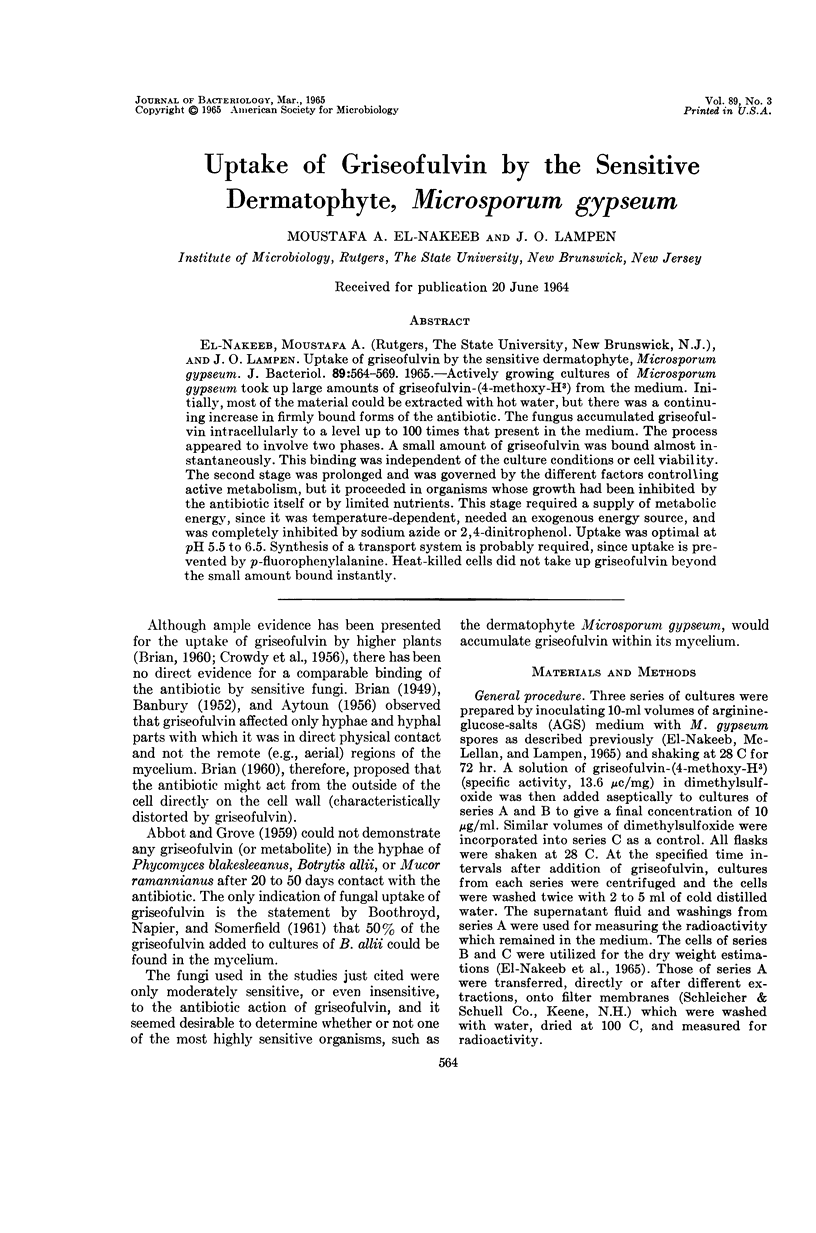
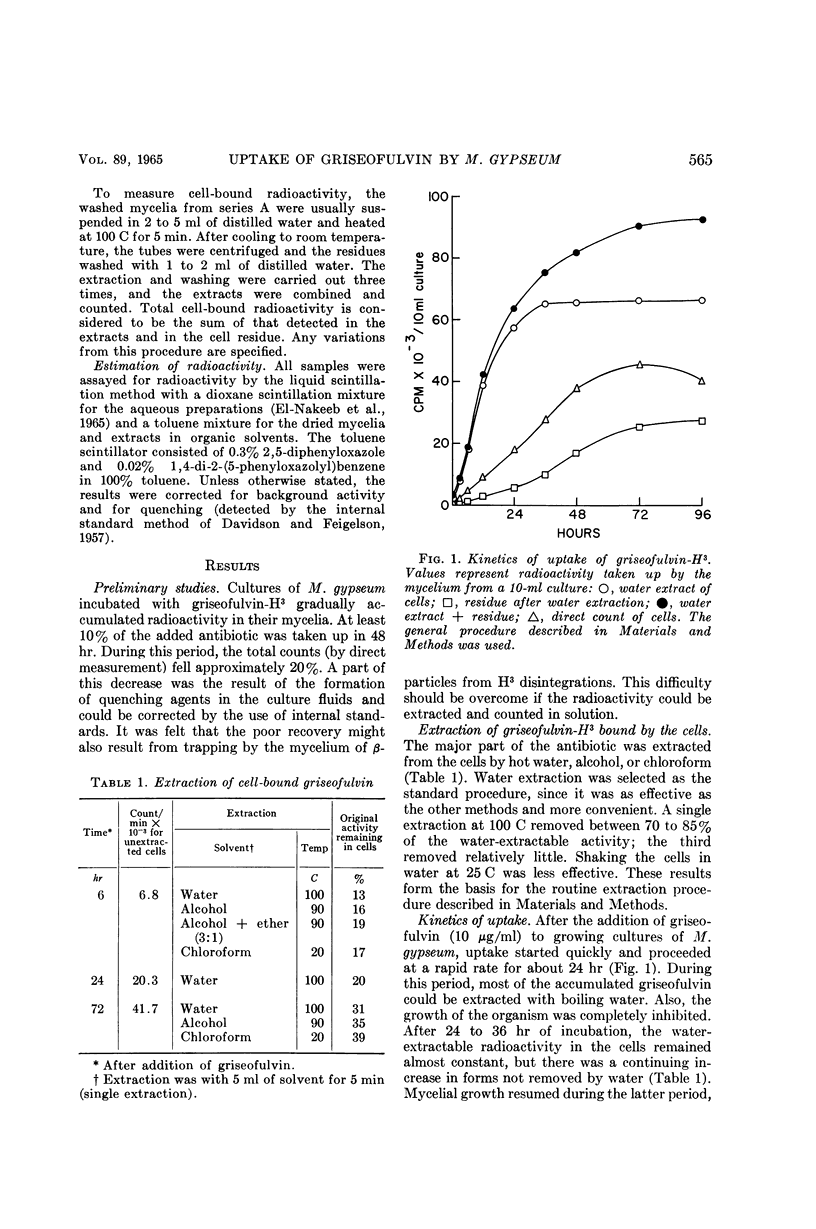
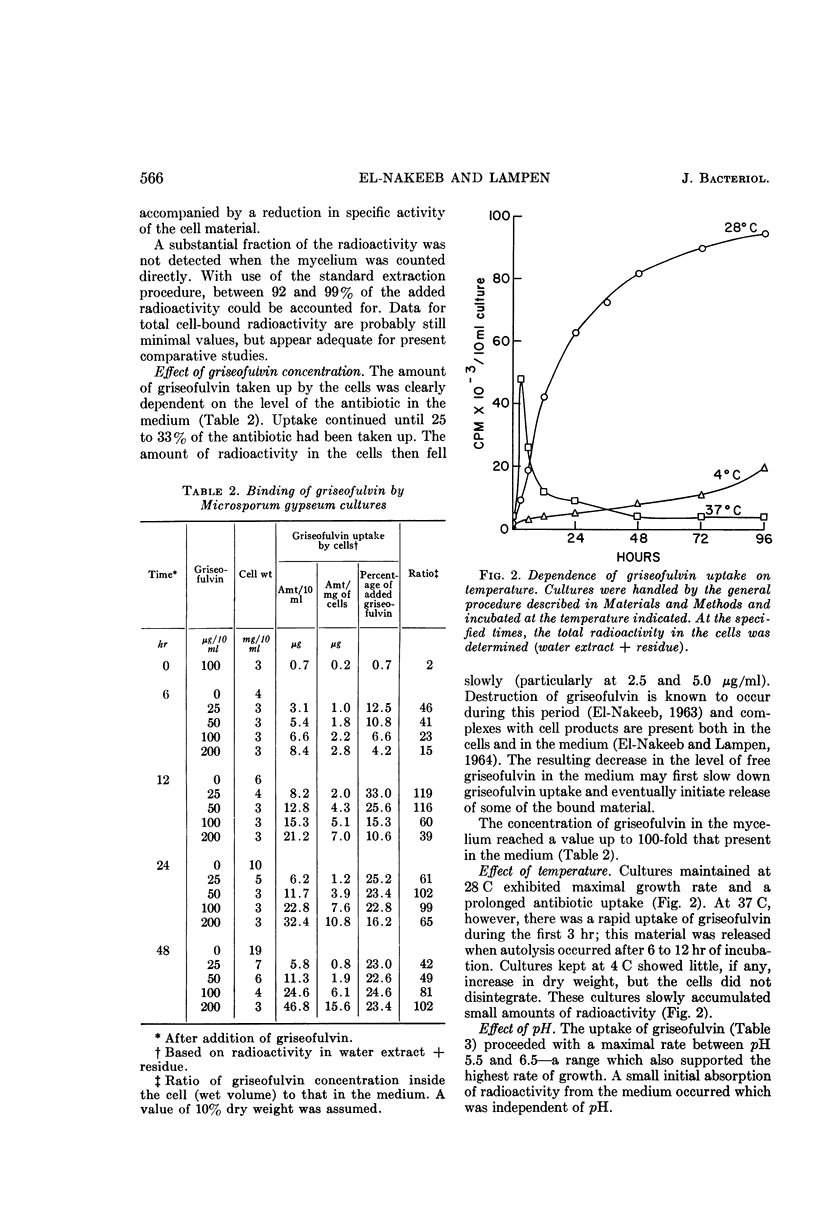
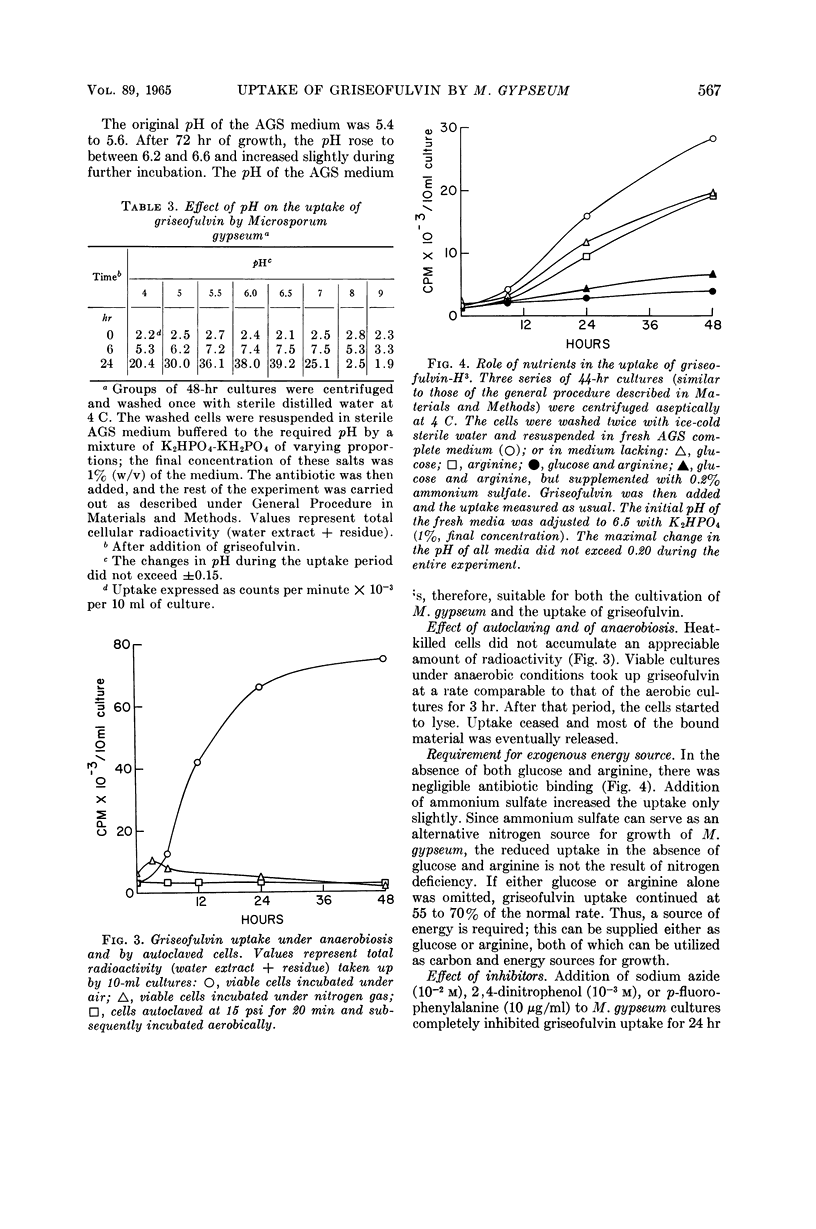
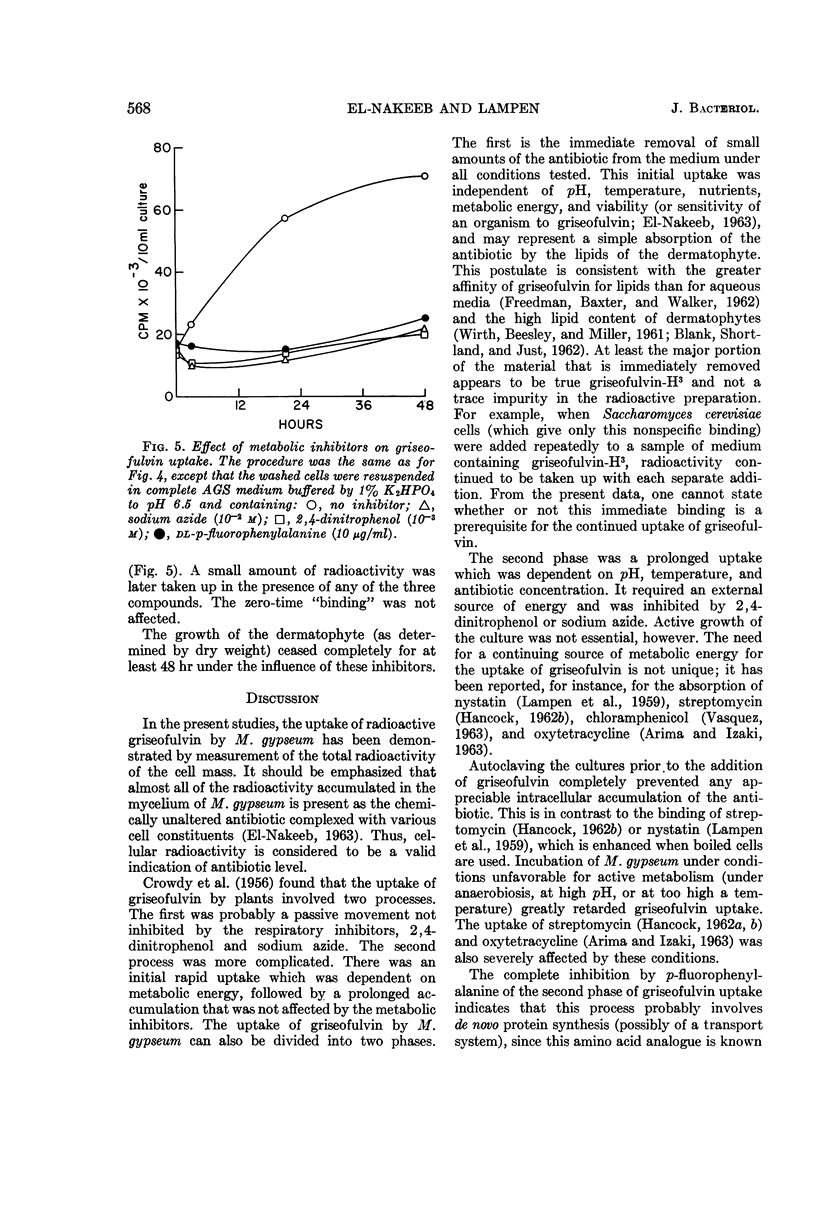
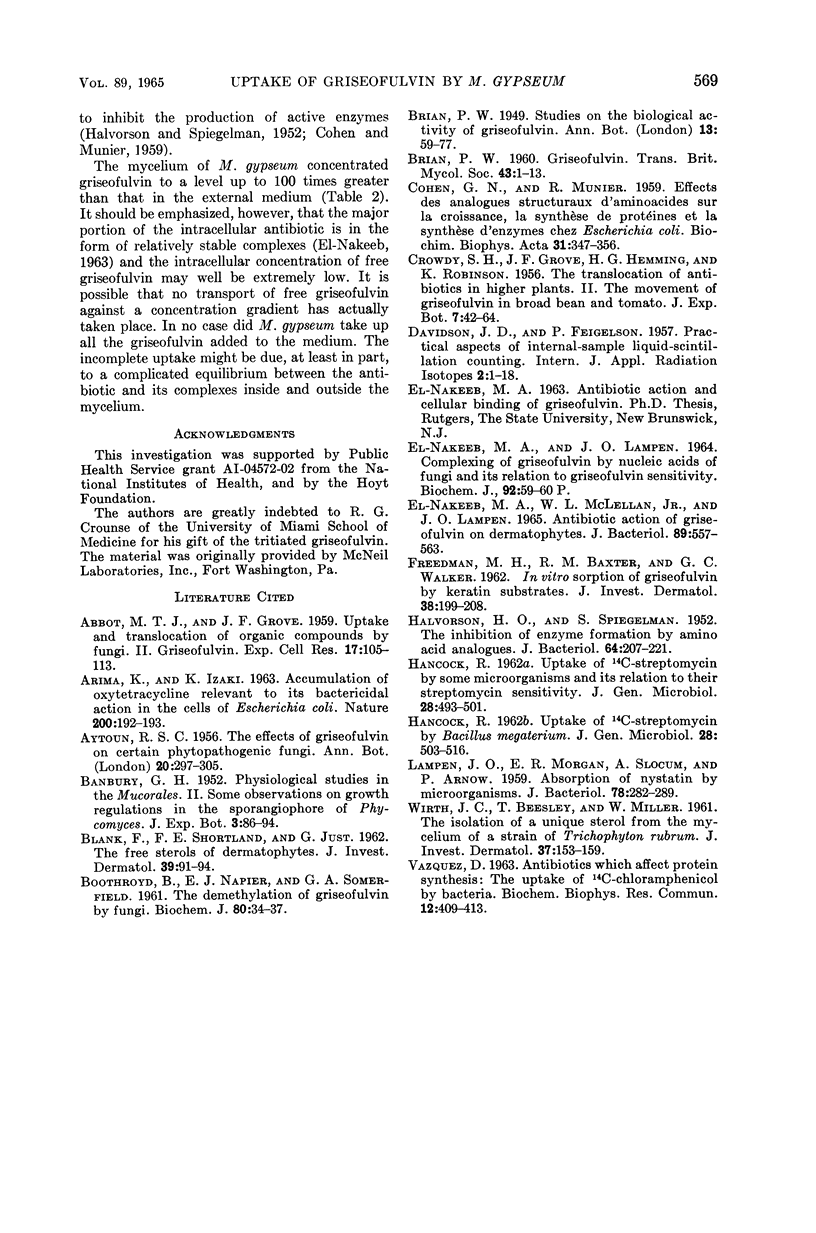
Selected References
These references are in PubMed. This may not be the complete list of references from this article.
- ABBOT M. T., GROVE J. F. Uptake and translocation of organic compounds by fungi. II. Griseofulvin. Exp Cell Res. 1959 Apr;17(1):105–113. doi: 10.1016/0014-4827(59)90156-9. [DOI] [PubMed] [Google Scholar]
- ARIMA K., IZAKI K. ACCUMULATION OF OXYTETRACYCLINE RELEVANT TO ITS BACTERICIDAL ACTION IN THE CELLS OF ESCHERICHIA COLI. Nature. 1963 Oct 12;200:192–193. doi: 10.1038/200192a0. [DOI] [PubMed] [Google Scholar]
- BLANK F., SHORTLAND F. E., JUST G. The free sterols of dermatophytes. J Invest Dermatol. 1962 Aug;39:91–94. doi: 10.1038/jid.1962.87. [DOI] [PubMed] [Google Scholar]
- Boothroyd B., Napier E. J., Somerfield G. A. The demethylation of griseofulvin by fungi. Biochem J. 1961 Jul;80(1):34–37. doi: 10.1042/bj0800034. [DOI] [PMC free article] [PubMed] [Google Scholar]
- COHEN G. N., MUNIER R. Effets des analogues structuraux d'aminoacides sur la croissance, la synthèse de protéines et la synthèse d'enzymes chez Escherichia coli. Biochim Biophys Acta. 1959 Feb;31(2):347–356. doi: 10.1016/0006-3002(59)90007-1. [DOI] [PubMed] [Google Scholar]
- DAVIDSON J. D., FEIGELSON P. Practical aspects of internal-sample liquid-scintillation counting. Int J Appl Radiat Isot. 1957 Apr;2(1):1–18. doi: 10.1016/0020-708x(57)90021-2. [DOI] [PubMed] [Google Scholar]
- EL NAKEEB M. A., MCLELLAN W. L., Jr, LAMPEN J. O. ANTIBIOTIC ACTION OF GRISEOFULVIN ON DERMATOPHYTES. J Bacteriol. 1965 Mar;89:557–563. doi: 10.1128/jb.89.3.557-563.1965. [DOI] [PMC free article] [PubMed] [Google Scholar]
- FREEDMAN M. H., BAXTER R. M., WALKER G. C. In vitro sorption of griseofulvin by keratin substrates. J Invest Dermatol. 1962 Apr;38:199–208. [PubMed] [Google Scholar]
- HALVORSON H. O., SPIEGELMAN S. The inhibition of enzyme formation by amino acid analogues. J Bacteriol. 1952 Aug;64(2):207–221. doi: 10.1128/jb.64.2.207-221.1952. [DOI] [PMC free article] [PubMed] [Google Scholar]
- HANCOCK R. Uptake of 14C-streptomycin by Bacillus megaterium. J Gen Microbiol. 1962 Jul;28:503–516. doi: 10.1099/00221287-28-3-503. [DOI] [PubMed] [Google Scholar]
- HANCOCK R. Uptake of 14C-streptomycin by some microorganisms and its relation to their streptomycin sensitivity. J Gen Microbiol. 1962 Jul;28:493–501. doi: 10.1099/00221287-28-3-493. [DOI] [PubMed] [Google Scholar]
- LAMPEN J. O., MORGAN E. R., SLOCUM A., ARNOW P. Absorption of nystatin by microorganisms. J Bacteriol. 1959 Aug;78:282–289. doi: 10.1128/jb.78.2.282-289.1959. [DOI] [PMC free article] [PubMed] [Google Scholar]
- VAZQUEZ D. ANTIBIOTICS WHICH AFFECT PROTEIN SYNTHESIS: THE UPTAKE OF 14C-CHLORAMPHENICOL BY BACTERIA. Biochem Biophys Res Commun. 1963 Aug 14;12:409–413. doi: 10.1016/0006-291x(63)90115-3. [DOI] [PubMed] [Google Scholar]
- WIRTH J. C., BEESLEY T., MILLER W. The isolation of unique sterol from the mycelium of a strain of Trichophyton rubrum. J Invest Dermatol. 1961 Aug;37:153–159. [PubMed] [Google Scholar]


